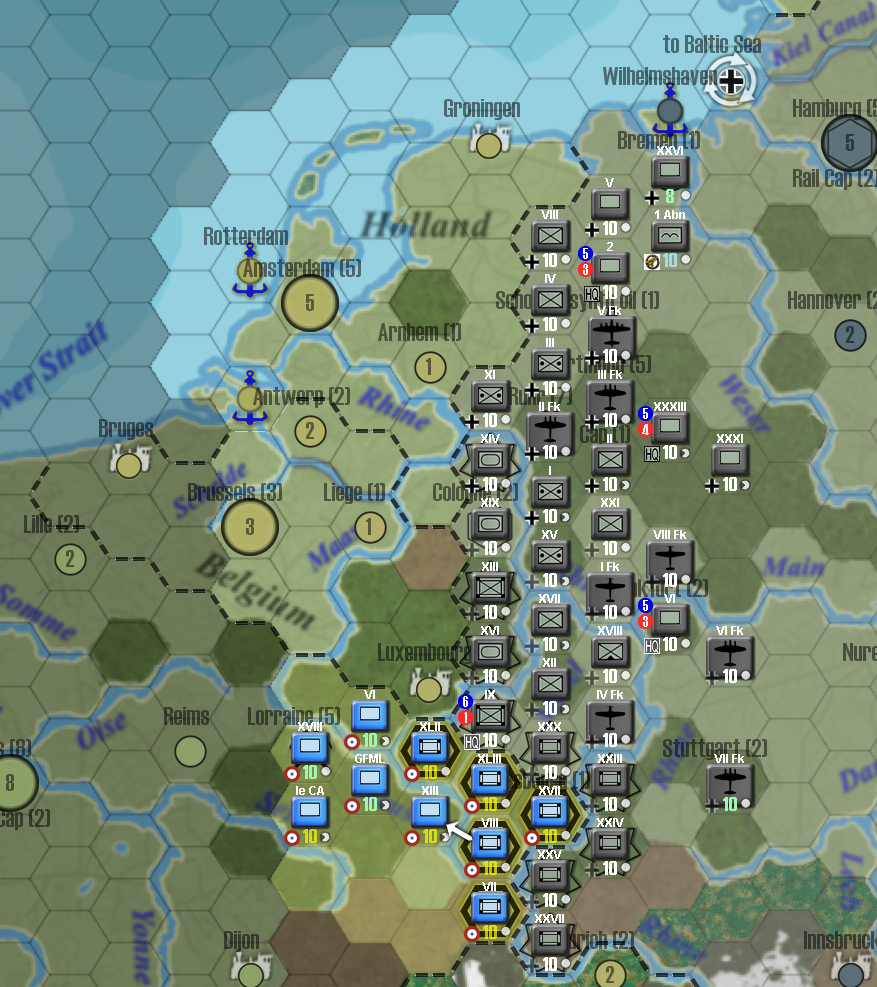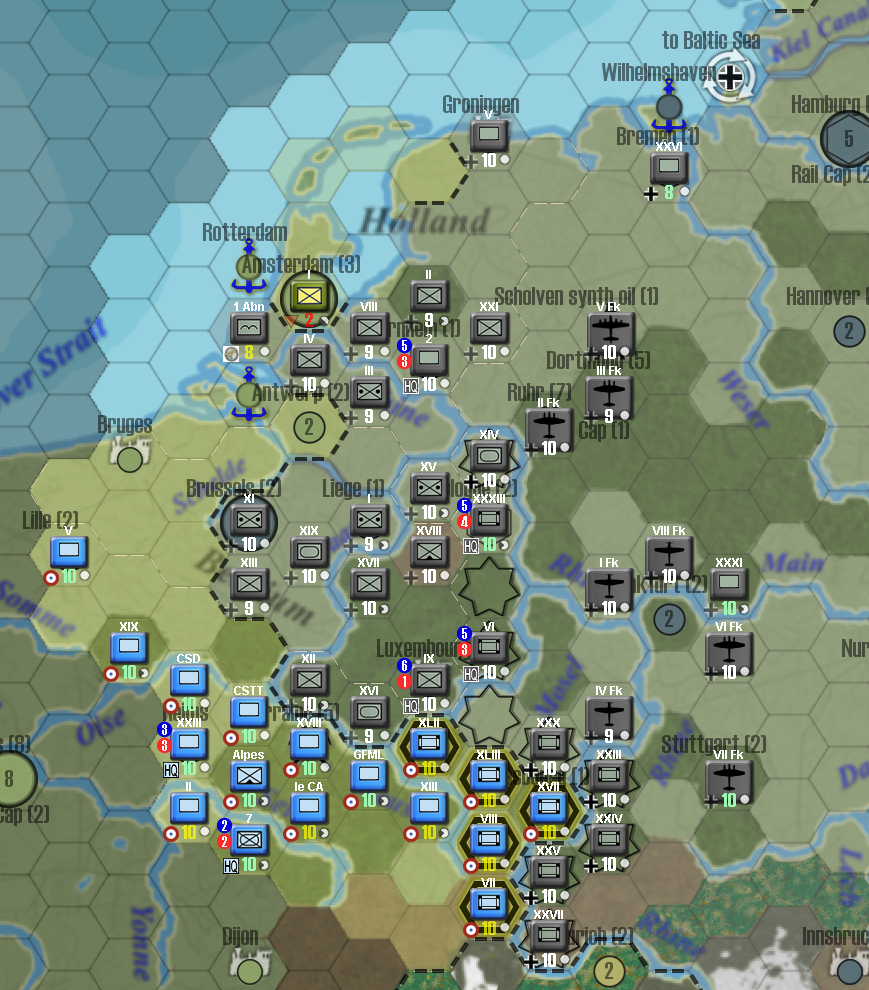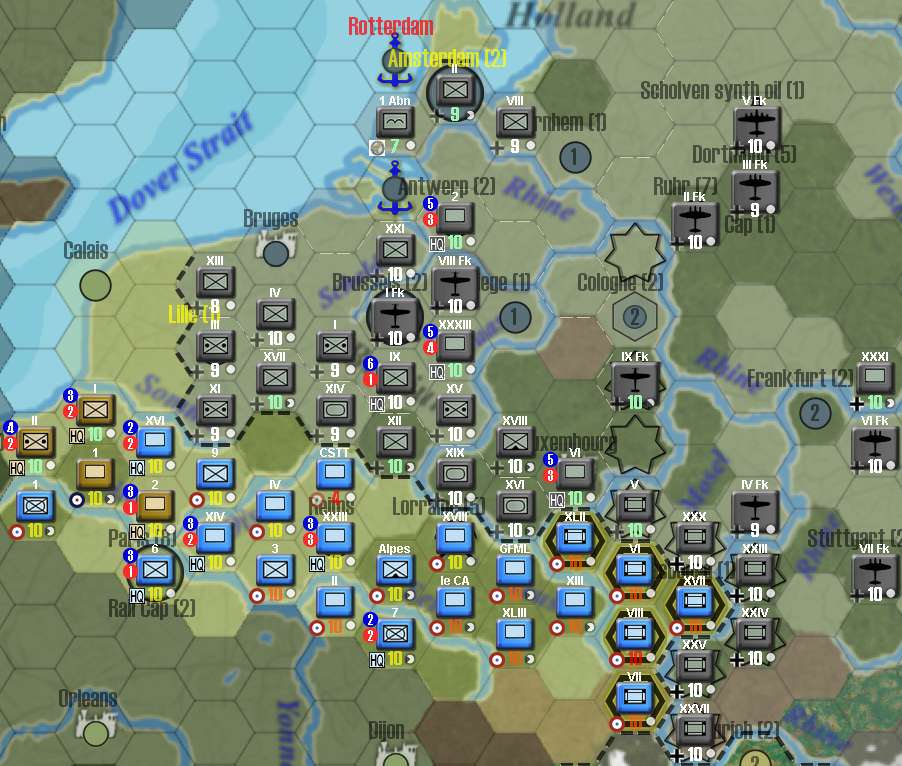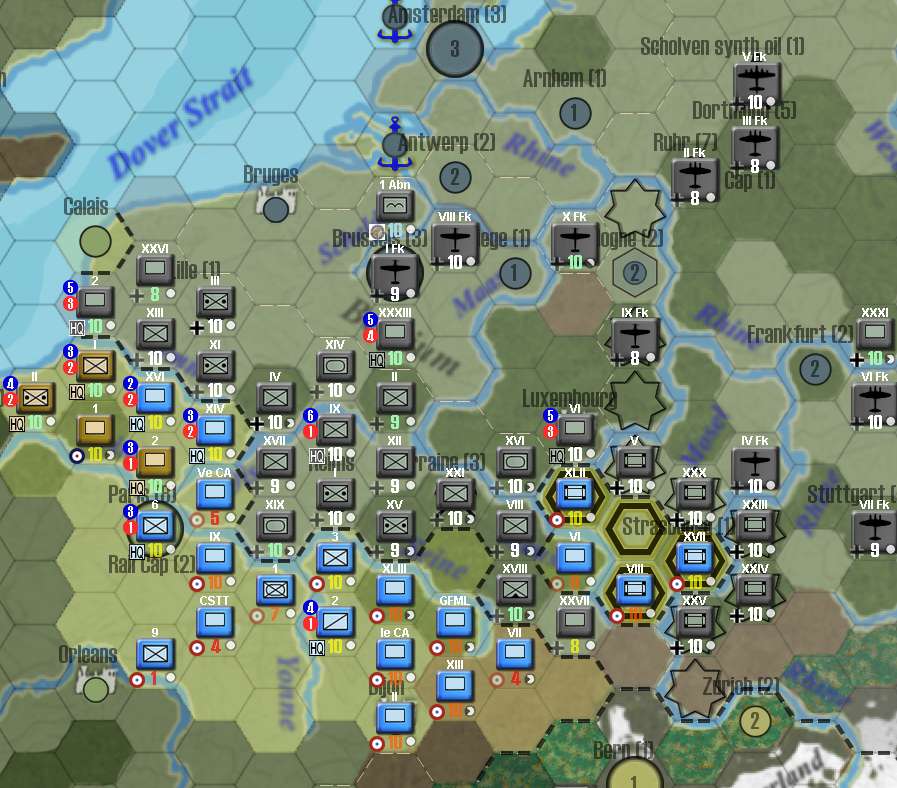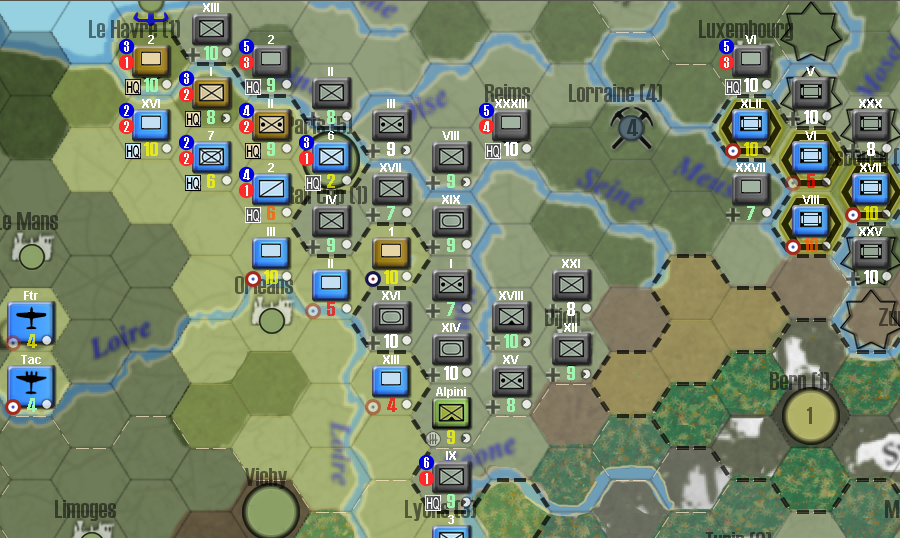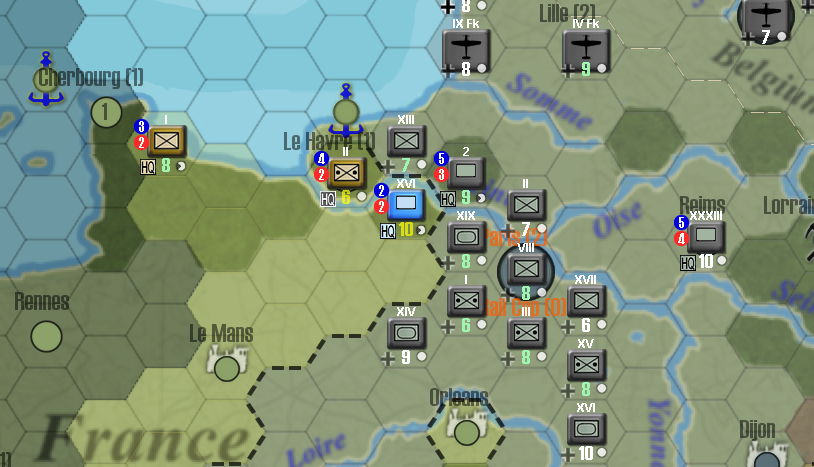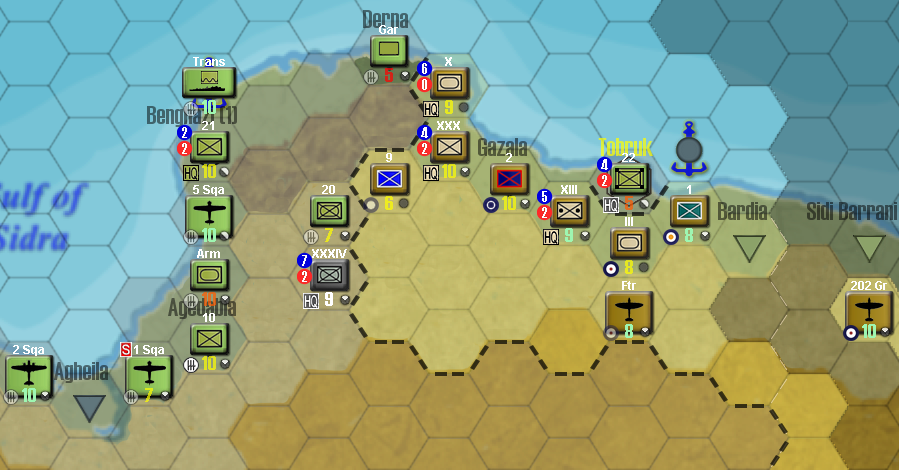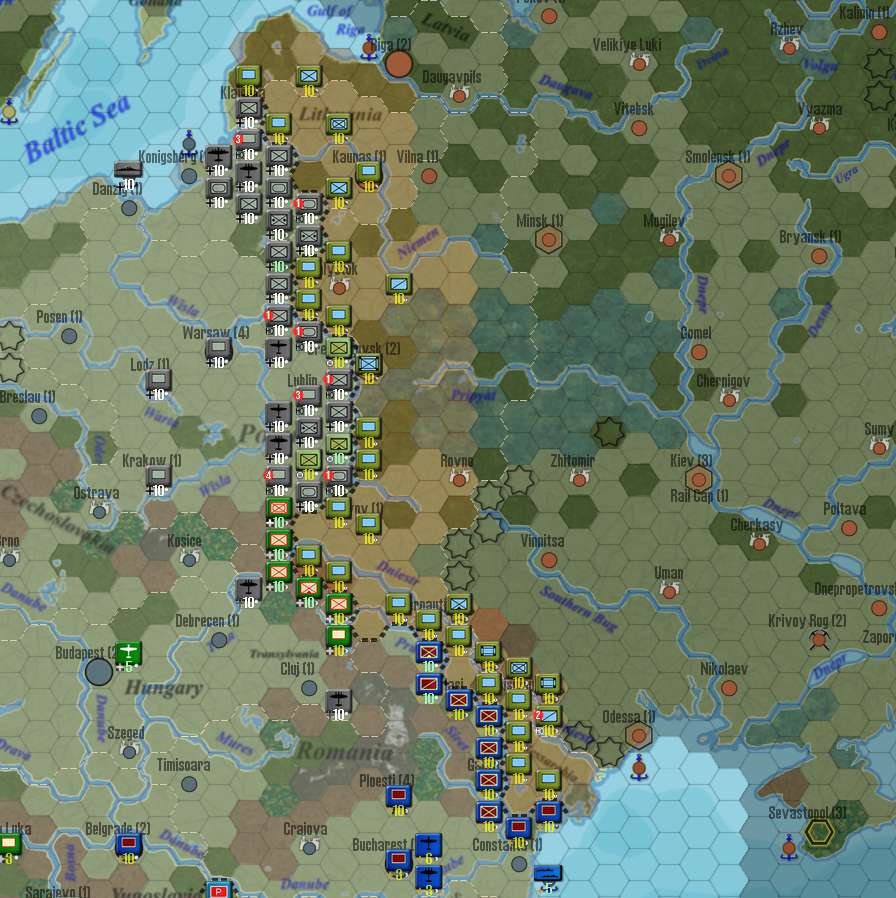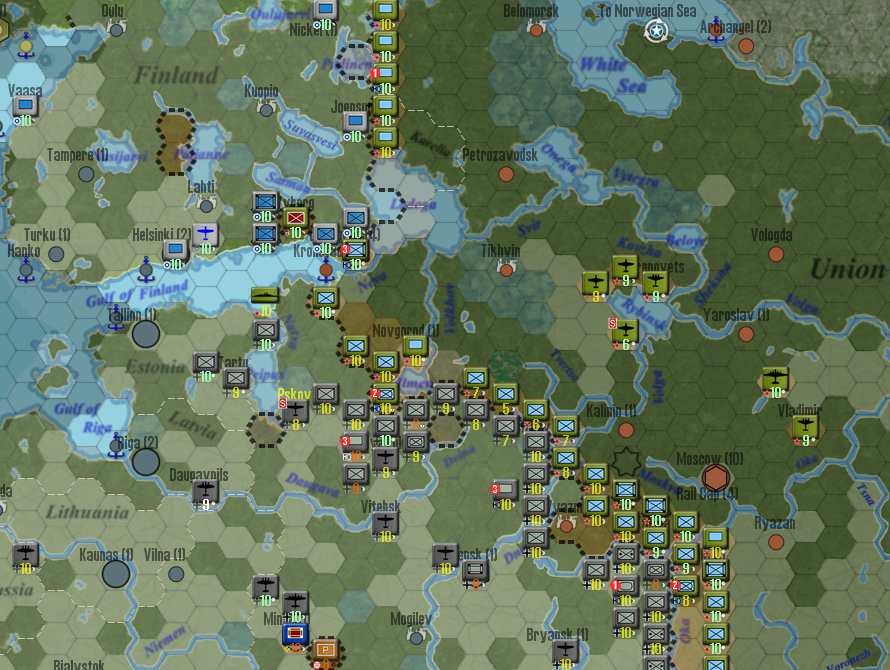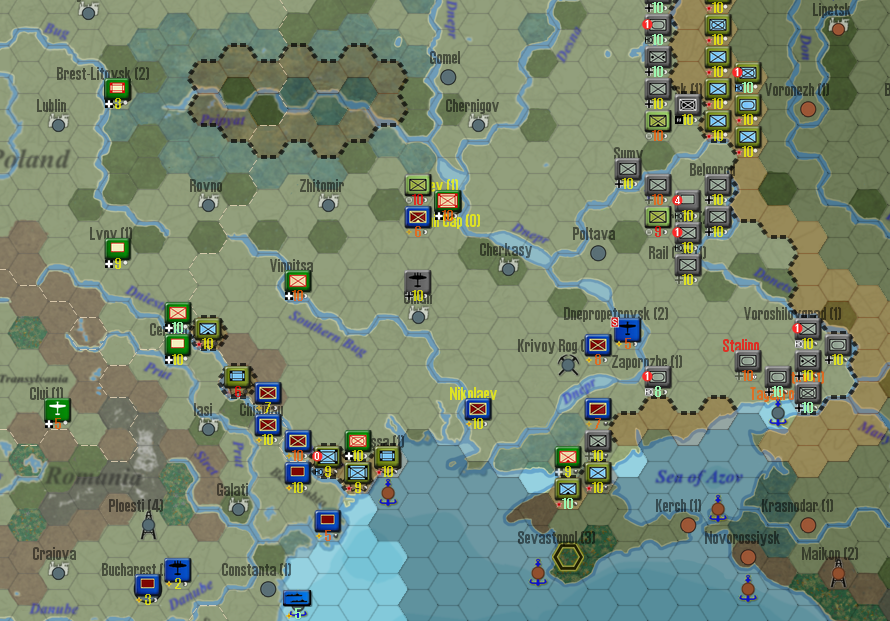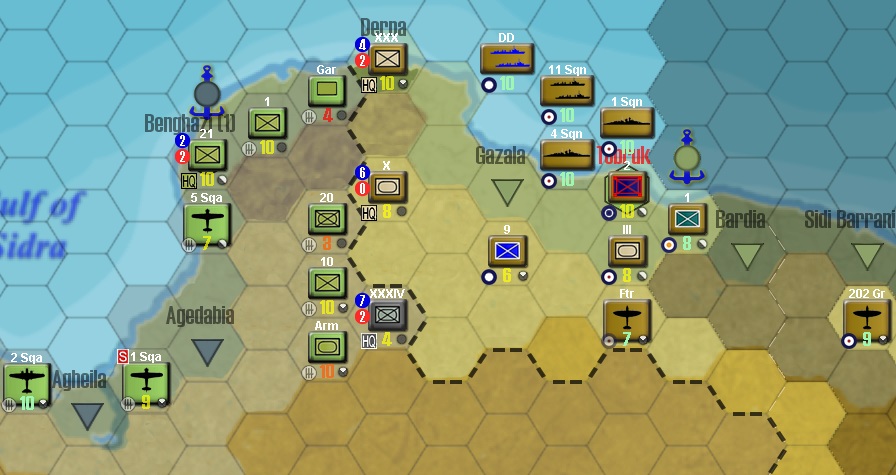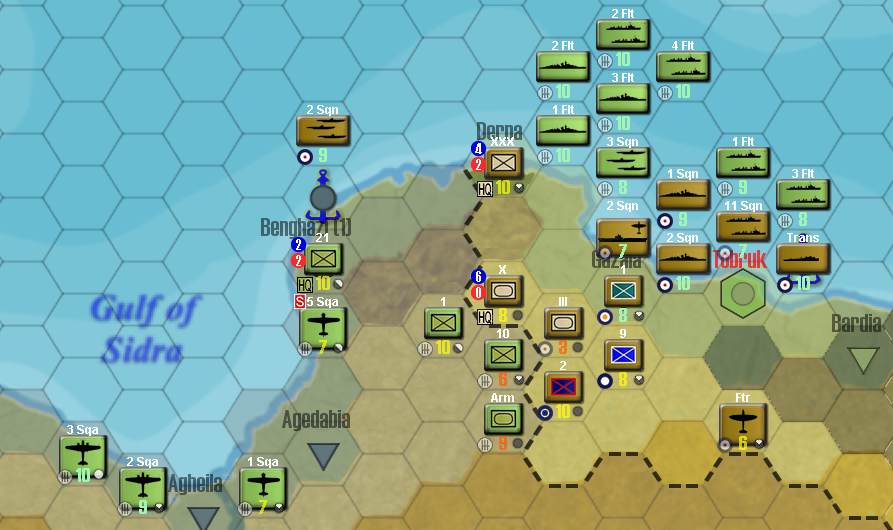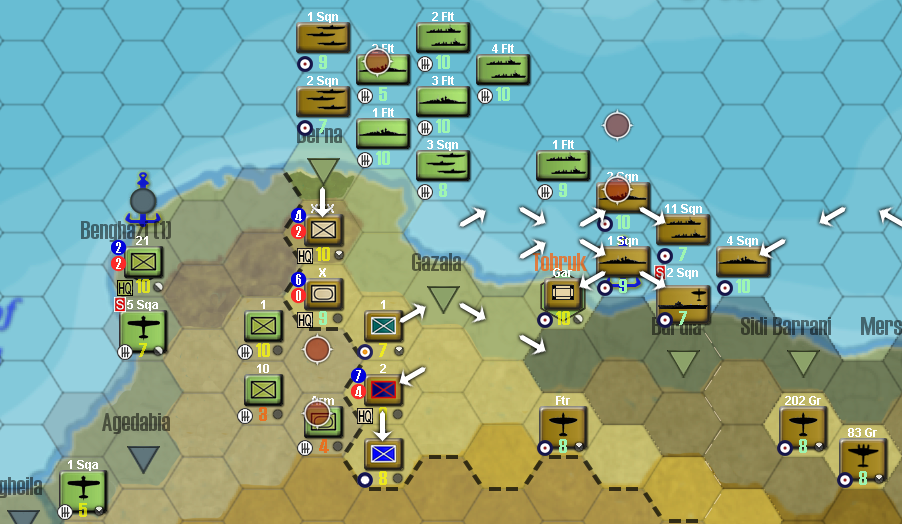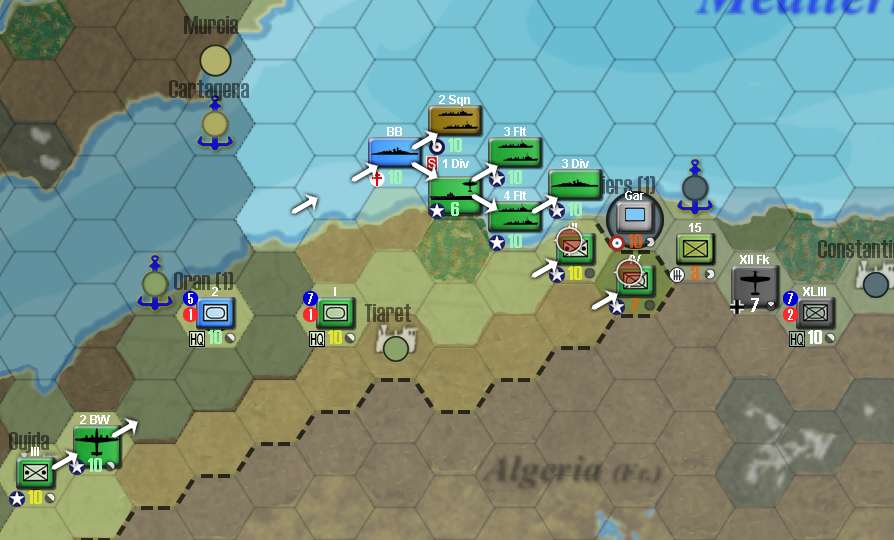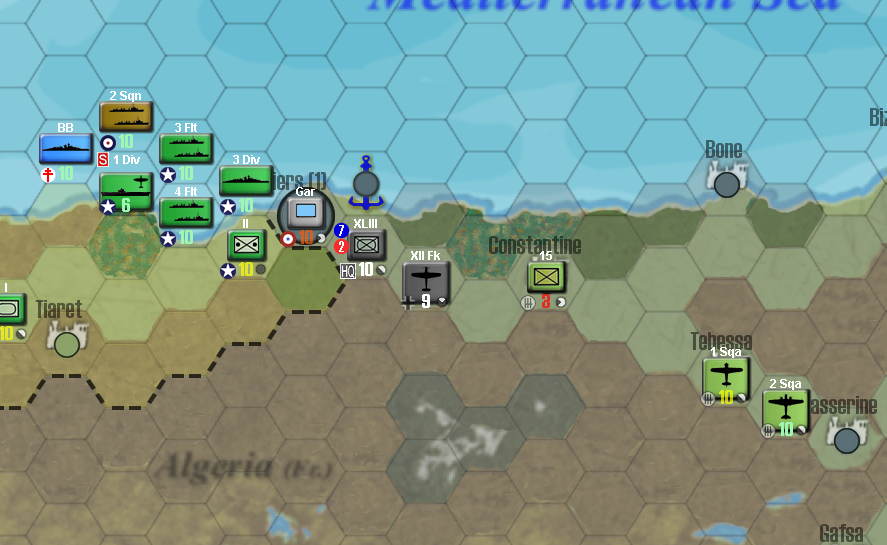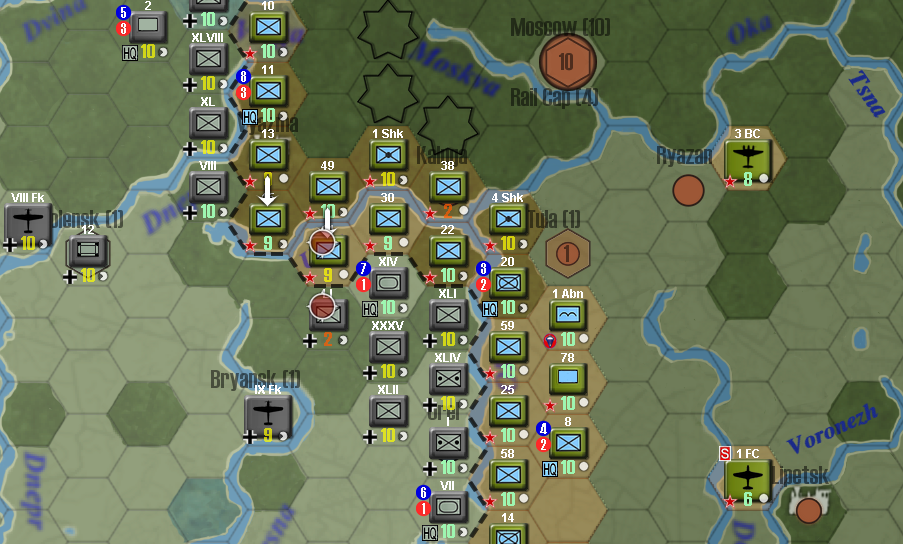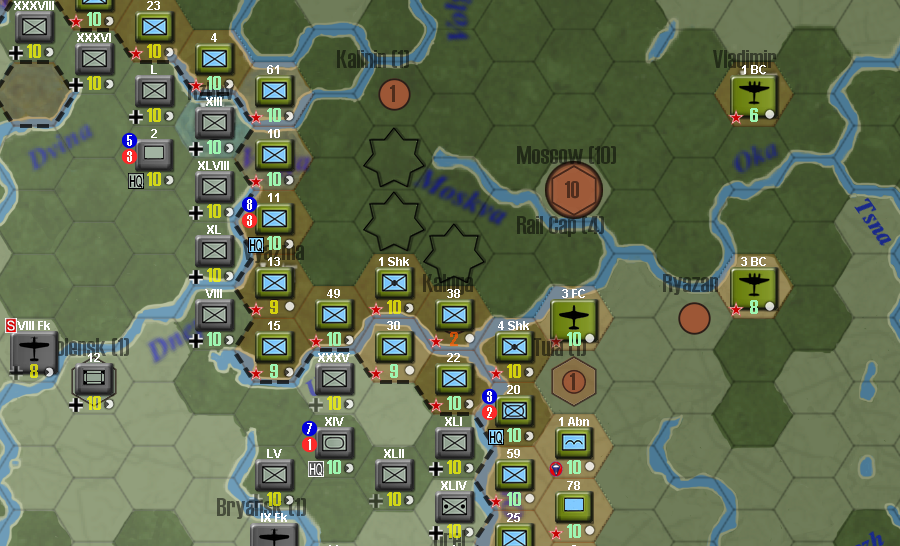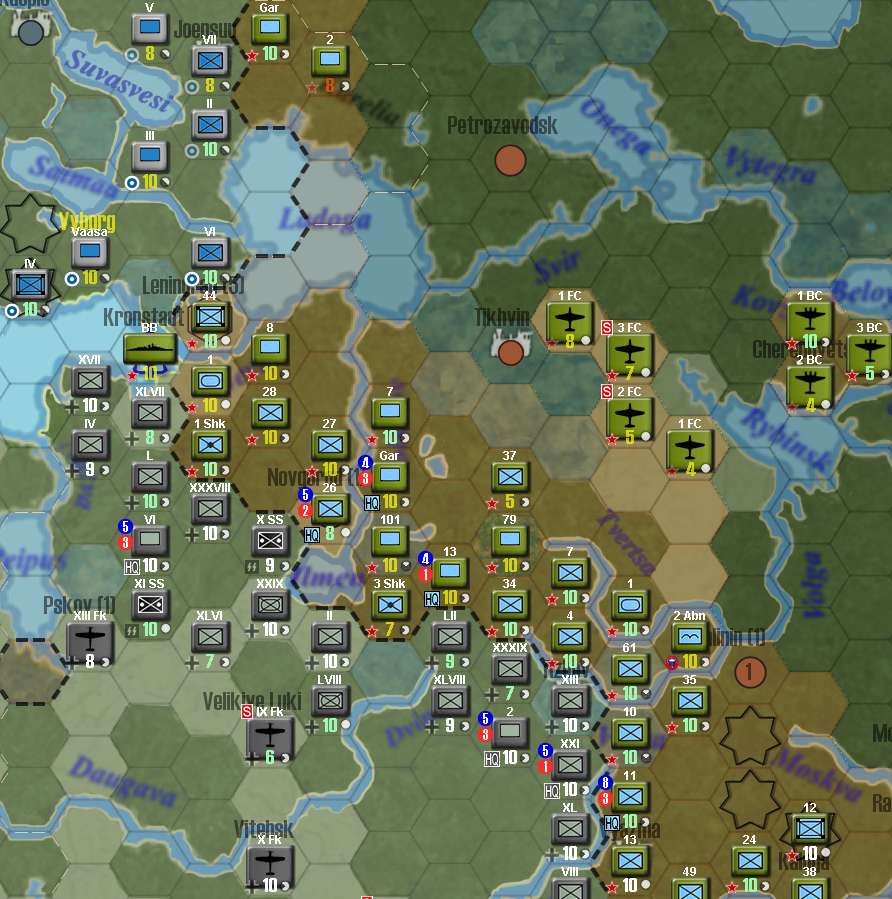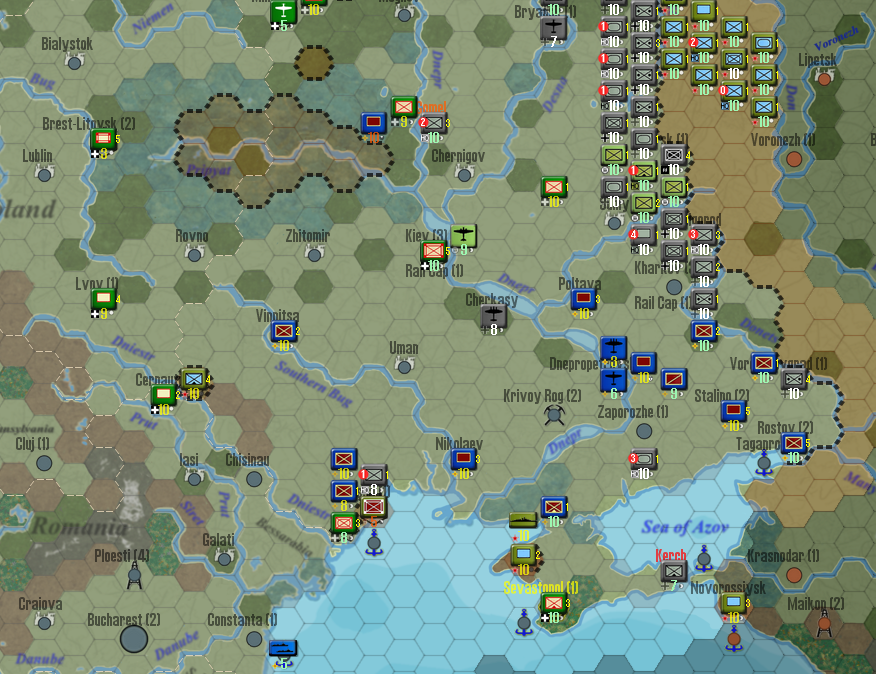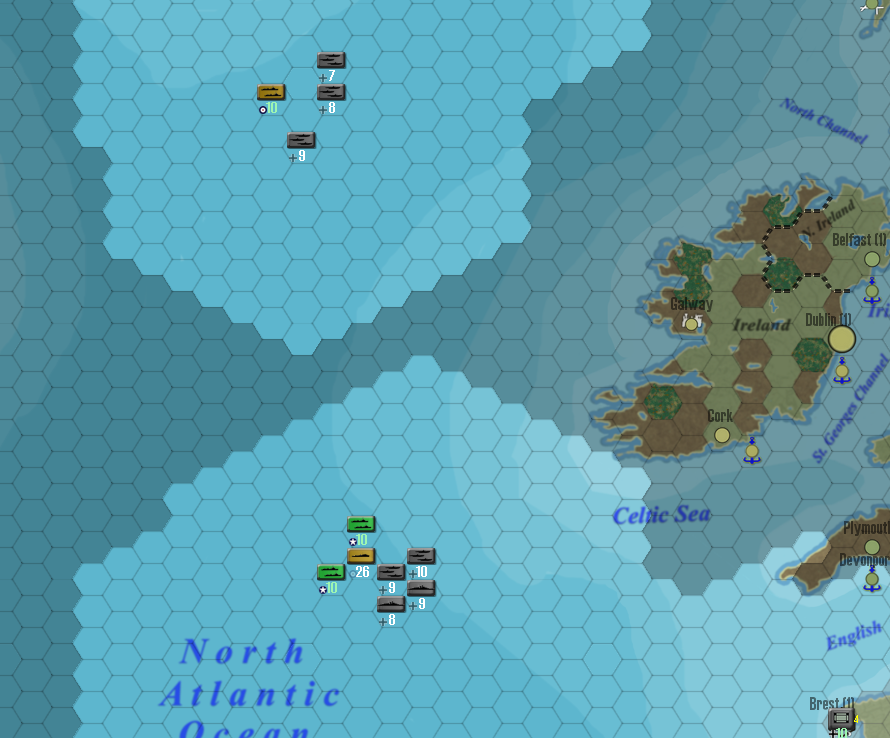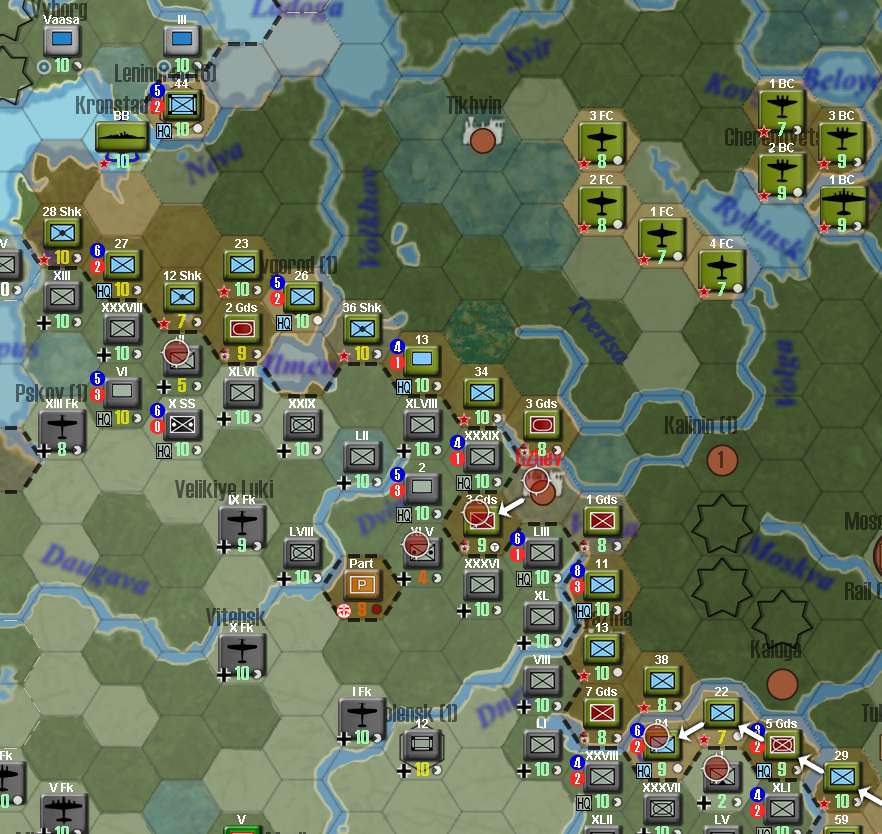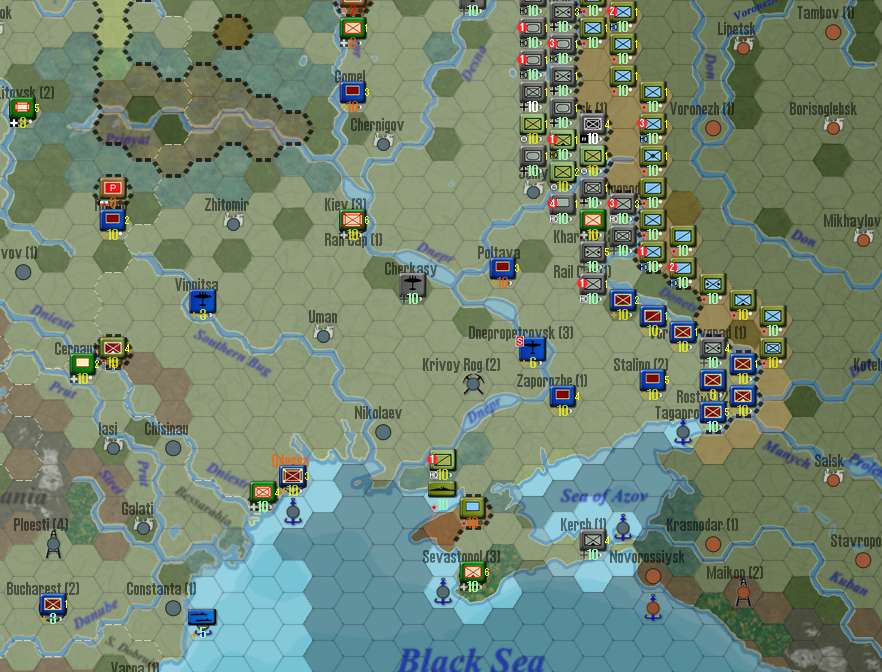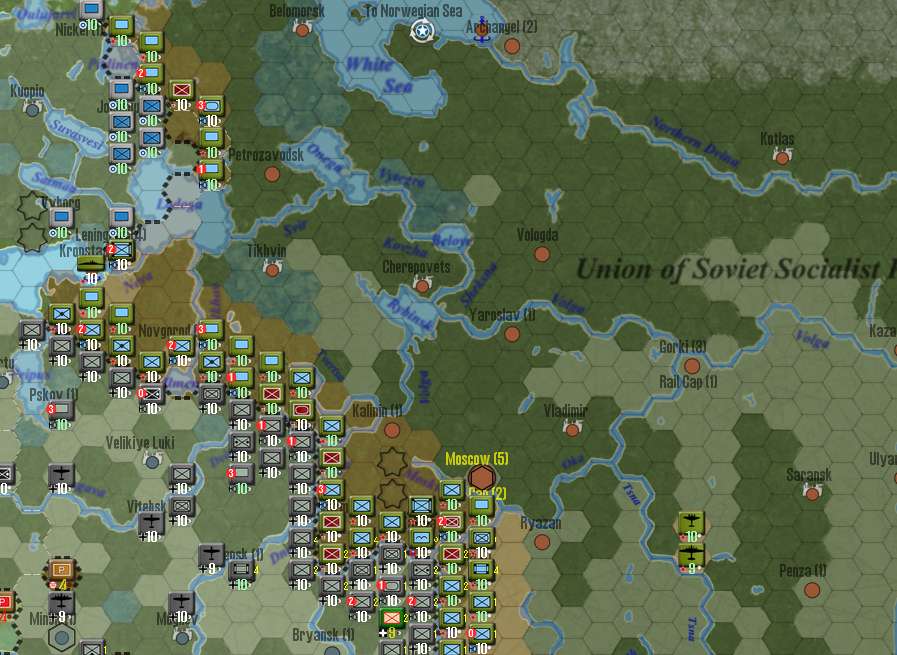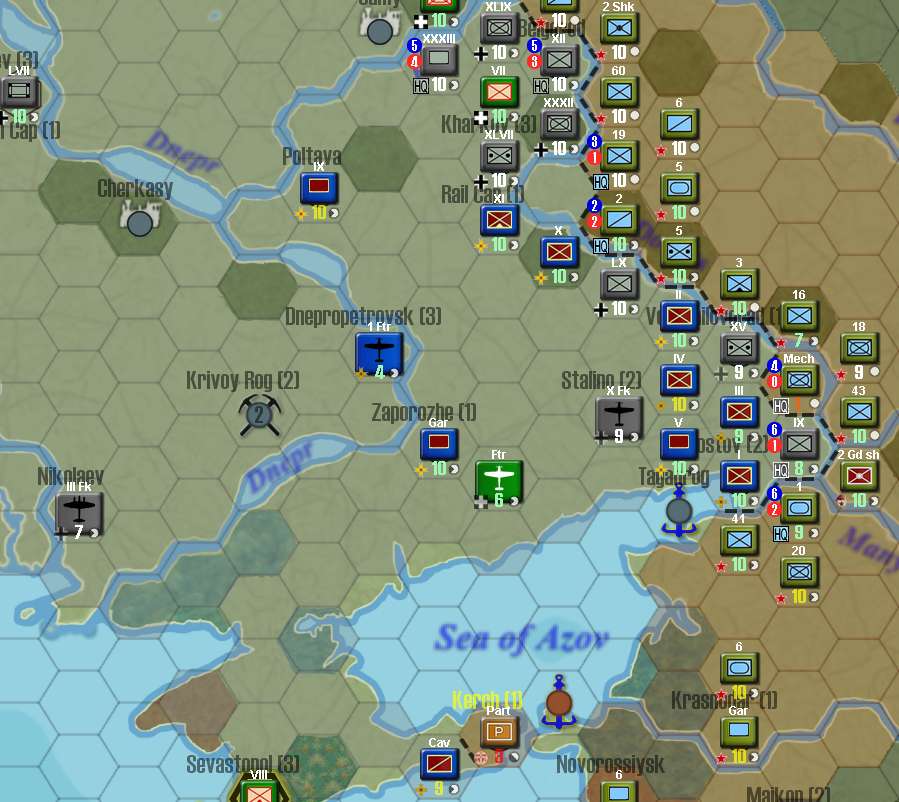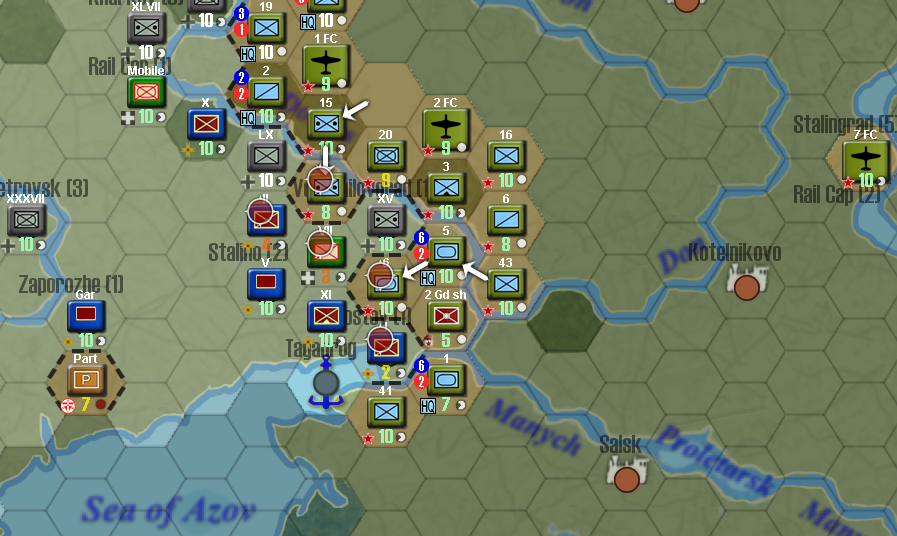MTO (1943)
As mentioned, Allies had a hard time clearing the way to Tunis mostly due to heavy Axis resistance in Mareth. In January 3, 1943 (turn 62), the city-fortress was still in Axis hands:
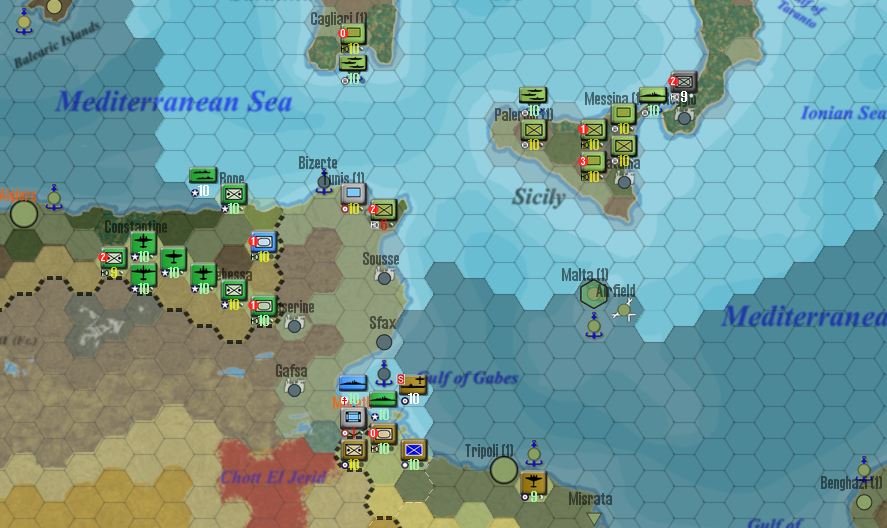
Italian 15 Corpo (infantry unit close to Tunis) succeeded in reaching Tunisia but was constantly harassed by Allied air forces. Chances of referred unit of making it safely to Italy mainland were rather slim.
Meanwhile the build up of forces in Sicily have continued slowly but steadily. Rommel's mech, that had been previously evacuated from Algiers port to Marseilles, was railed to Reggio in order to possibly reinforce Axis defensive positions in the island.
Americans finally entered Tunis, thus ending all Axis presence in Africa in February 12, 1943, turn 64.
At sea, early 1943 saw some rather heavy naval battles. Italians, still possessed 2 BB's, 1 DD and 3 subs by the start of the year which, with the support of
Reggia Aeronautica could be able to inflict some damage to Allied navy. This way, Italian navy went again into attack in February and, with some air support, succeeded to sink a RN DD. Later, in Allies turn, combined Allied fleet, in return, was able to sink 1 BB, 1 DD and 1 sub. Then, in the subsequent Axis turn, in March, remaining Italian navy units managed to sink a halved British BB. Finally, Allies reply meant to sink the remaining Italian BB and to batter the subs with their air forces. Allies had sunk 2 BB's, 1 DD and 1 sub and Italians had sunk 1 BB and 1 DD. Allies had got naval supremacy in the Med.
This naval supremacy allowed the Allies to conduct their amphibious operations in Sardinia, Sicily and southern Italy unmolested. Only Italian tacs were able to deliver some damage to the approaching transports.
Allied landings in Sardinia started almost immediately after the end of African campaign. Very little resistance from the Italians here, since in couple of turns, Cagliari was taken.
Sicily offered more resistance but no Allied unit was lost in the campaign. Italian counterattacks, at most, managed to halve some attacking Allied unit but the Axis, lacking heavy units deployed in the island (Rommel's mech finally stood in Italy mainland), couldn't expect much more.
Once Allies got ashore in Sicily (April 13, turn 67), many Allied naval transports units were also sent for large amphibious operations all along southern Italy coasts. Allies intended to carry out a blitzkrieg campaign in southern Italy, thus giving no time to the Germans to organise their defences. In fact, Taranto fell to the Allies in the same turn that Messina did, this triggering Italian surrender on July 2 1943, turn 71.
Germans took seriously Allies threat in Italy and reacted accordingly. A relatively stable Eastern Front allowed to rebase several fighter and tactical bomber Luftwaffe units from Ukraine to northern Italy and Yugoslavia. Of course, southern Italy had been already gave up and nothing could be done about it, but given the powerful forces that Allies already had in Italy, it was vital for the Axis to stop them at the Gustav Line.
Newly built corps units were promptly railed to Italy from Berlin and even the Bulgarian army was called to help the Germans. When enough units were gathered in central Italy, Wehrmacht launched some counterattacks. In one of them, south of Naples, a FF corps unit was killed. Allies in return killed 1 of the 2 Bulgarian corps sent to Italy, took Foggia and were about to breach Gustav Line when British X armoured Corps launched a powerful thrust through the Adriatic sea coast. German corps holding at very low strength in the northernmost fort hex of Gustav Line, proved decisive since in the following Axis turn, Germans achieved great success: thanks to crushing hits from Luftwaffe tacs, Hoepner HQ LV AK (which coming from Rome replaced depleted German corps in the fort) in collaboration with Bulgarian corps, killed British X armoured Corps, Axis minor unit even retaking Foggia. Vigorous Luftwaffe reaction had saved the day for the Germans in Italy.
In the following Allies turn, Foggia was again taken and Bulgarian corps killed. US III motorised Corps advanced close to Gustav Line but this move proved not to be a good one since this Allied unit was low in morale and completely within the striking range of the xp Luftwaffe tacs in northern Italy:

That shot corresponds to the end of Allies turn 74, August 31, 1943.
Then it came Axis reply: US motorised got so badly damaged due to Luftwaffe tacs hits that Hoepner's LV AK was able to finish it off. Germans, thanks to Luftwaffe, had passed from the possibility to be overrun in Italy to strongly consolidate their positions.
It took several turns for the Allies to regroup their units. In the meantime, Germans brought plenty of units to central Italy, paratrroper division and mountain corps amongst them. Offensive activity from the Allies only resumed in late October (turn 77), when they started attacking Naples. On the first round, they halved in strength the defending German LXI AK. Shot below shows the front line situation at the end of the Axis turn 78 (November 19, 1943) and once LXI AK in Naples was repaired:
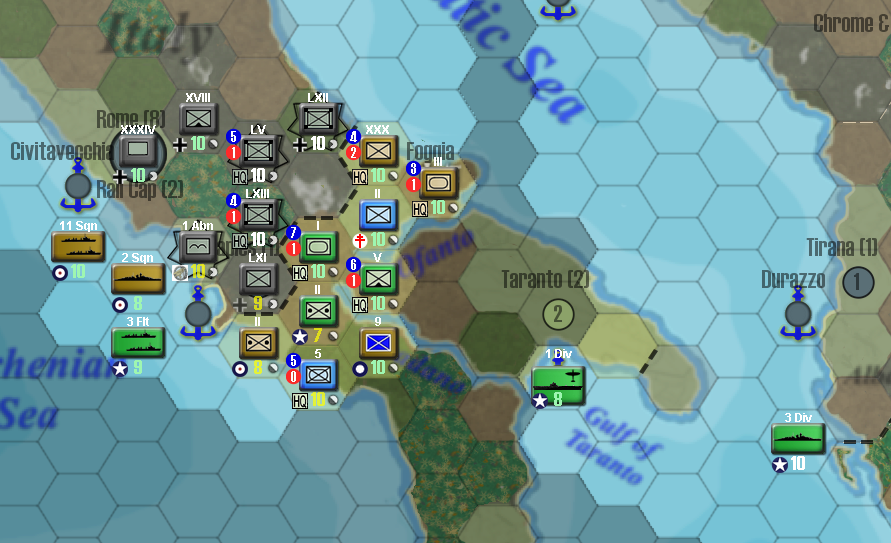
Anyway, Naples offered little resistance and the city fell to the Allies before the year ended.









